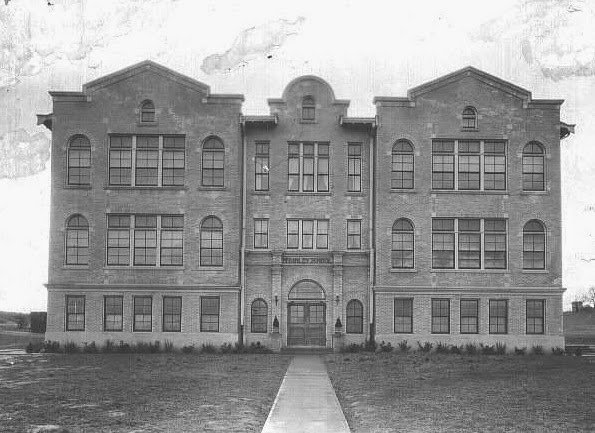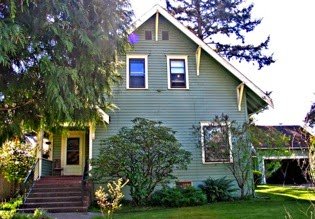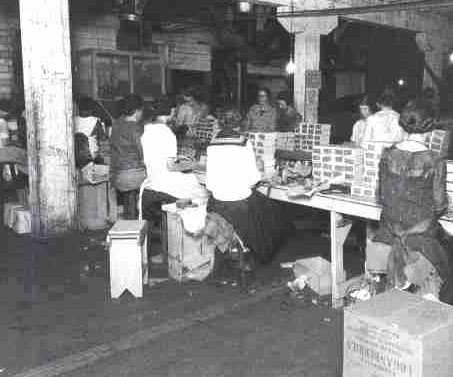World Events
- As World War enters its first year, American opinion turns toward Allied sympathy: German U-Boats begin to target British ships such as the RMS Lusitania, sunk off Ireland with a loss of 1089 American and British passengers. British nurse Edith Cavell is executed for helping Allied soldiers escape from Belgium and combat in France.
- Rasputin is murdered in Russia and revolution is brewing.
- The first transcontinental telephone call is successfully completed.
- The U.S. House of representatives rejects a proposal to give women the right to vote.
- The Cape Cod Canal opens, shortening the waterway distance between NYC and Boston and making Cape Cod into an island.
- While working as cook, Mary Mallon infects 51 patients with typhoid fever and is placed under quarantine for life. Such a asymptomatic carrier of disease or misfortune is since referred to as a “Typhoid Mary”
- Harry Houdini performs a straight-jacket escape performance. Theda Bara becomes an early movie star in “A Fool There Was” and “Birth of a Nation” premieres in Los Angeles.
- Notable Books: A Spoon River Anthology, Edgar Lee Masters, The Song of the Lark, Willa Cather and The Thirty-nine Steps, John Buchan .
In Salem
In the Willamette Valley, the talk was about an announcement from San Francisco on July 27, 1915, that the Oregon commissioners to the Panama-Pacific exposition were preparing to celebrate “Loganberry Day” at the fair and that Royal Anne cherries, grown by B. I. Ferguson of Polk County, received a first prize. That year the Salem Brewery Association was reorganized as Northwest Fruit Products Company and began marketing LOJU that year. By the end of the year, jams and jellies became popular once an enameled can was developed. Oregon Fruit Juice Company, H. S. Gile, president, published a six-page folder advertising Pleasant brand of loganberry juice as “Made in Salem” As the demand increased for the loganberries, more fields were planted; however, when inflation and excessively high sugar prices pushed up the price of the berries, customers rebelled.
This photograph illustrates women packaging dehydrated loganberries in a Salem plant: these labor conditions, although appearing informal must have been uncomfortable over long hours!
When you visit
By the late 1920s, the ups and downs of the economy caused many farmers to plant their fields with other crops and, in the late 1930s the loganberry market was further reduced due to the introduction of boysenberries. The Salem canning industry, once a mainstay of our economy, declined after World War II as fresh frozen foods became available. Many of the former berry fields around Salem have disappeared under the new residential developments. Sites of former factories in the downtown area, especially on Trade Street, have now been transformed by urban redevelopment into city parks.
Other events
- Dennis Gwenn, whose family owned the Crystal Gardens Ballroom, sent us this photograph of Liberty Street, probably taken this year. Looking north, it shows structures built on rafters to be at street level. As a result, the ballroom had a spacious basement. In later years, a swimming pool was accommodated in this space.
- Harley White is elected as mayor. Accompanied by 6 Aldermen, he visited Eugene to investigate that city’s “pay-as-you-go: street car system with a view of adopting it here.
- The intersection of State and Commercial Streets this year features Ladd and Bush Bank, the Durbin Building and busy urban traffic. A streetcar dominates the middle of State Street. Only two blocks north at Chemeketa Street, a horse-drawn Cherry Fair float in front of small stores creates a scene more like a rural village.
- East School is renamed as Washington School. For over sixty years it served as an elementary school for the residential neighborhoods north and east of the State House. As office, commercial and apartment buildings absorbed these properties, the need for a school here diminished: in 1949 it was demolished for the present Safeway store.
 |
| McKinley School soon after it was built in 1915. |
- As one residential neighborhood vanishes, another grows: this year McKinley Elementary School is built in South Salem at 466 McGilchrist Street. The three-story school is still in use a hundred years later.
- Flax is being produced at Oregon State Penitentiary. This labor-intensive production fit in with the effort to give convicts useful employment, mostly in farm work. But by 1950, the demand for fabrics had changed and the market for flax no longer profitable for this institution or for local farmers.
- This year the prison’s warden, Harry Minto, was shot and killed by Otto Hooker, an escaped convict cornered in Albany. Patrolman A. J. Long of Portland fatally wounded Hooker as he was pulling his gun to fire on the officer.
- The Olmstead House is built on Shipping Street this year on property originally belonging to the Paulus family. There is a tradition in the neighborhood that this was originally a parsonage for the Jason Lee Memorial Church. The earliest records of ownership are from 1932 through 1945 when James N. and Sarah Olmsted lived here. She continued to reside here as widow until 1954, taking in relatives or boarders. One of these, Leo Weir, owned the property from 1957 until 1972. The house retains what is probably its original appearance with broad front porch typical of bungalows in this time.
- In June, as a result of two prominent Salem attorneys settling their case out of court, Dr. O. B. Miles, county physician, is getting his front office door measured for a new pane of glass, broken when a fistic encounter arose between the attorneys in the hallway.
 |
| The Ratcliff Home |
- On a country road south of Salem, Charles Ratcliff, builds a home within an orchard, possibly family land that bordered the rural Route #4 and is thought to have included land up to Morningside Drive. As early as 1905, two Ratcliff names are found on the tax roles of Marion County, each with considerable property. Charles and Effie Ratcliff are found here in the 1926 City Directory. By 1941 he is listed as a prune grower and as Secretary/Treasurer of the Salem Co-operative Prune Growers. In 1948, his home has the present address. Newer houses now surround this city lot, but one ancient prune tree survives in the rear of the house. This residential street is now named for the family: Ratcliff Drive in the Morningside neighborhood.
From Ben Maxwell:
- A Dodge touring car, carrying four passengers and several hangers-on, is driven up the monumental front steps of the State House for a demonstration of power ~ how far the driver got up the 30-some steps is unknown.
- S. P. Bennett is at Skipton’s stable, 448 Ferry Street, to buy horses suitable for cavalry and light artillery usage in all colors except light gray. Such horses must stand 15 hands high, be from four to nine years old, and weigh not less than 1,000 pounds. (For anyone who has seen the film, War Horse, the fate of these horses will be familiar.)
- In December, a Crosley A-C electric Gembox radio was advertised in the Capitol Journal as an appropriate Christmas present, available for $69. A-C, the ad explained, meant that the radio used current you have in your home.



One Comment